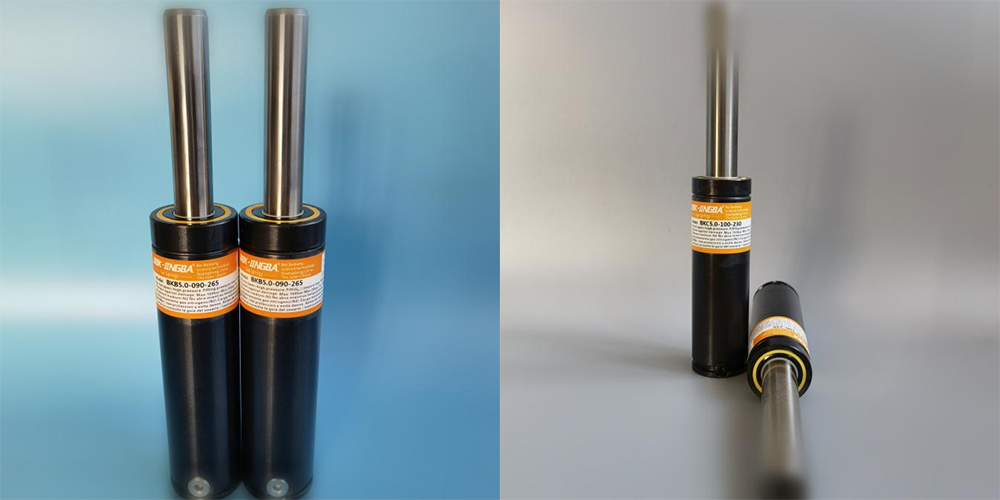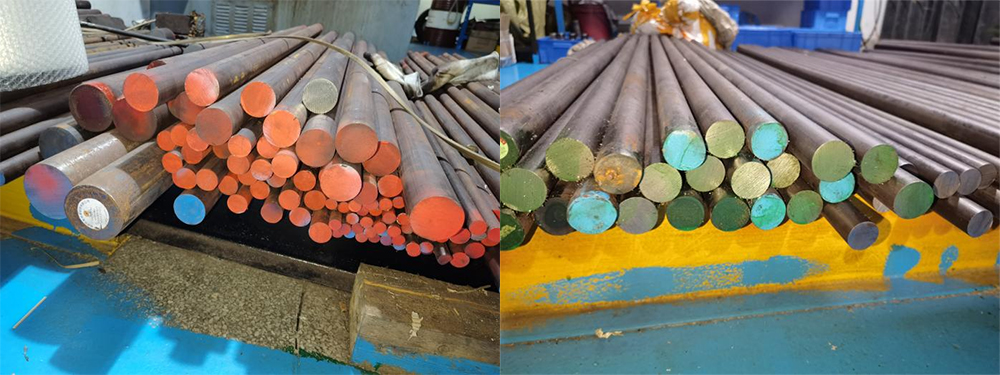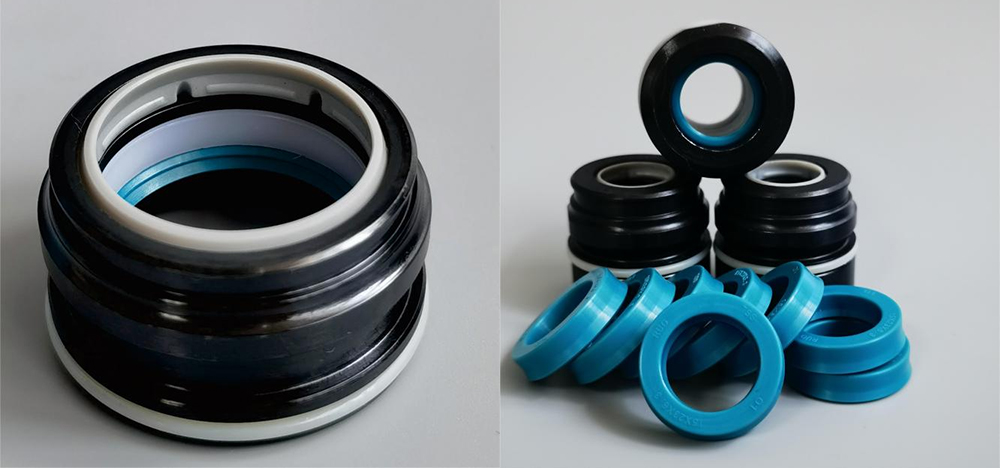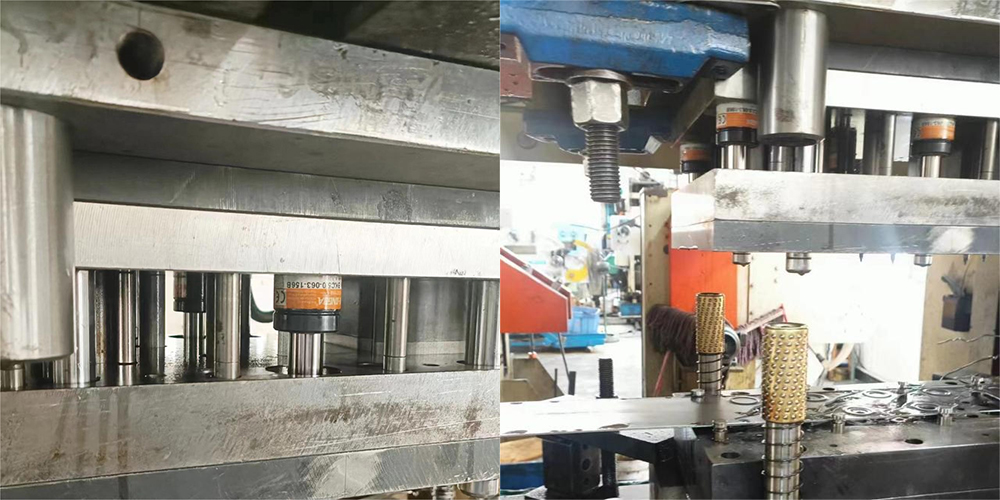News
新闻中心
联系我们
移动电话:13620045661、13602381201刘工
电话:0769-85309665 传真:85322966QQ:1048038402、1559436599
电邮:bbk100@126.com
地址:广东省东莞市长安镇沙头358省道998号港芝科技园
The core differences between ISO international standard type and super high pressure type nitrogen gas springs
发布日期:2025-09-25
Differences in Technical Parameters
1. Pressure range and boosting characteristics
ISO international standard type: Strictly adhering to the ISO 11901 series standards (such as ISO 11901-1:2025), the nominal initial force range is typically 900N to 100,000N, and the pressure fluctuation is controlled within ±5%. Its pressure curve is relatively gentle, and the force coefficient at the end of the stroke is generally between 1.2 and 1.5, making it suitable for scenarios that require stable pressure output.
Super high pressure type: The pressure rating is significantly higher than that of the ISO type. The initial force can reach 200,000N, and the force coefficient at the end of the stroke is generally between 1.5 and 1.8, with some models even exceeding 2.0. For instance, the WCU420 model has an initial force of 4,165N (425kgf) and a maximum pressure of 7,258N (740kgf), making it suitable for high-impact loads. Its design objective is to provide higher pressure in a smaller volume, such as the compact gas spring specified in ISO 11901-3:2021, with a maximum filling pressure of up to 18MPa.

2. Stroke to volume ratio
The stroke range of the ISO type is usually 10 to 300mm, and the ratio of stroke to cylinder height is approximately 1:2 to 1:3, with a relatively slender structure.
The super pressure type reduces the volume by 30% to 50% under the same stroke by optimizing the internal structure (such as shortening the base length of the cylinder block and adopting integral cutting forming). For instance, the outer diameter of the BKC series ultra-compact nitrogen gas spring is one size smaller than that of the ISO type, but the diameter of the piston rod is the same, achieving "small body, big force".
Materials and Manufacturing Processes
1. Material selection
ISO type: The cylinder block is mostly made of high-strength aluminum alloy or carbon steel, and the surface is treated with anodic oxidation or nickel plating, suitable for conventional environments.
Super high pressure type: The cylinder block is generally made of alloy steel (such as 42CrMo), and the piston rod is precisely ground (surface roughness Ra≤0.02μm) and undergoes nitriding treatment (hardness up to 1200HV), which can withstand higher stress. For instance, some models adopt nano-coating technology, which enhances their wear resistance by more than twice.

Structural Design Differences
1. Installation method
ISO type: It features a high degree of standardization and offers various forms such as threaded interfaces (like M6-M24) and flange installation. It can directly replace traditional springs and is suitable for quick assembly.
Super high pressure type: To adapt to high loads, a dual fixation method combining bottom screw holes and flanges is mostly adopted to avoid structural deformation caused by uneven loading. For example, for models above 42,000N, the ISO 7-Rp 1/8 threaded interface is mandatory and a dedicated mounting plate is required.
2. Safety design
ISO type: Complies with the safety standards of ISO 11901-1:2025, including pressure relief devices and overload protection mechanisms.
Super high pressure type: In addition to the standard safety configuration, some models adopt a rupture disc design. When the internal pressure exceeds the critical value, it automatically depressurizes to avoid the risk of explosion.

Comparison of Application Scenarios
| Dimension | ISO International Standard Type | Super pressure type |
| Applicable mold types | Plastic molds (injection molding, blow molding), precision stamping molds | Metal stamping die (for automotive coverings and high-strength sheet metal forming) |
| Process requirements | Stable pressure, long holding time, and high requirements for fatigue resistance | High impact, short stroke, fast response |
| Typical Case | Mobile phone shell injection mold (pressure fluctuation ≤ 5%), electronic component stamping mold | Automotive beam stamping die (single spring bearing 200kN), household appliance metal parts forming |
| Lifetime performance | Pressure attenuation ≤ 5% after 1 million cycles (under normal operating conditions) | Maintain over 90% performance after 1.5 million cycles (high-frequency impact condition) |

Key Basis for Selection
1. Load calculation
Plastic mold: Select the ISO type based on the projected area of the plastic part × cavity pressure × safety factor (1.1-1.3), and give priority to models with pressure fluctuations of no more than 5%.
Metal die: Calculate the blanking force based on the thickness and tensile strength of the sheet. When choosing the super pressure type, a 20% to 30% overload allowance should be reserved.
Industry Standards and Certifications
ISO type: It has passed international certifications such as ISO 11901, FORD-WDX3560, and GM-M-150, and is compatible with products of brands like Kaller and Dadco.
Super pressure type: It needs to comply with ISO 11901-3:2021 or enterprise standards (such as BBK-JINGBA series), and some high-end models have passed IATF 16949 certification. It is suitable for the automotive industry.
Summary: The ISO international standard type is renowned for its stability and interchangeability, making it the top choice for plastic molds. The super pressure type, with its high load capacity and impact resistance, has become the mainstream choice for metal molds. In actual design, a comprehensive decision should be made in combination with specific process parameters, environmental conditions and cost budgets, and priority should be given to referring to the ISO 11901 series standards and the technical manuals provided by the manufacturers.
This information is for reference only. If there are any discrepancies, please notify our company for revision



